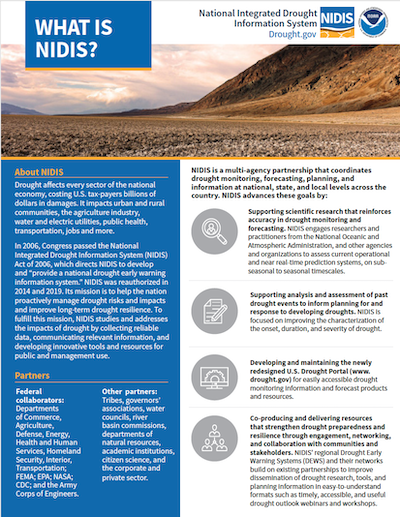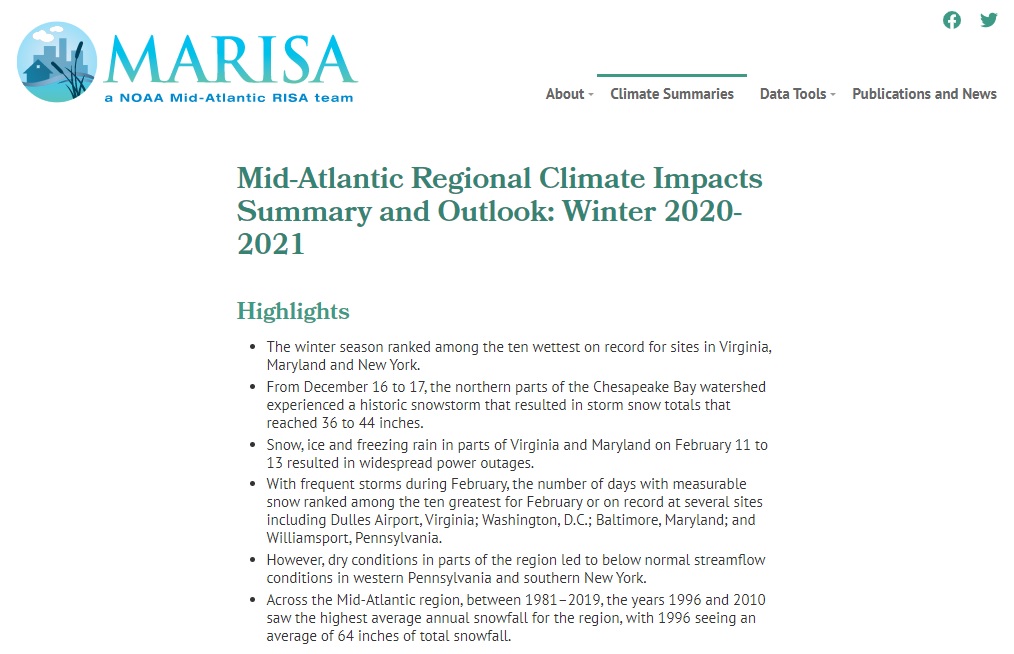NIDIS is a multi-agency partnership that coordinates drought monitoring, forecasting, planning, and information at national, state, and local levels across the country. In 2006, Congress passed the National Integrated Drought Information System (NIDIS) Act of 2006, which directs NIDIS to develop and “provide a national drought early warning information system.”
In this EOS opinion article, NOAA Modeling, Analysis, Predictions, and Projections (MAPP) Program Drought Task Force leaders working with the National Integrated Drought Information System (NIDIS) describe the disastrous impacts of droughts, heat waves, and fires in the United States and the world. They also discuss new MAPP- and NIDIS-funded research that is tackling the challenges of a drier, hotter, more fire-prone future.
Quarterly Climate Impacts and Outlook for the Western Region for December 2020 – February 2021. Dated March 2021.
Winter temperatures were well above normal in southern California and slightly above normal in all of Nevada, Washington, and Oregon. Near or slightly below normal temperatures were found in parts of New Mexico, Arizona, Utah, Colorado, Wyoming, Montana, and Idaho. Much of the West saw below normal precipitation throughout the winter.
Quarterly Climate Impacts and Outlook for the Great Lakes Region for December 2020 – February 2021. Dated March 2021.
Winter temperatures ranged from 1°C (2°F) below to 3°C (5°F) above normal. Winter precipitation was below average, with the basin seeing 55% of average.
Quarterly Climate Impacts and Outlook for the Midwest Region for December 2020 – February 2021. Dated March 2021.
Winter temperatures averaged to within a few degrees of normal across the region, but averaging hid the big temperature swings seen this winter. Winter precipitation was generally below normal across the Midwest.
Quarterly Climate Impacts and Outlook for the Missouri River Basin December 2020 – February 2021. Dated March 2021.
Temperatures this winter were extreme on both ends of the spectrum. Several states in the region ranked in the top 10 warmest Decembers and Januarys, while others ranked in the top 10 coldest Februarys. Although much of the region was on the dry side this winter, only North Dakota ranked in the top 10 at 3rd driest.
Quarterly Climate Impacts and Outlook for the Southern Region for December 2020 – February 2021. Dated March 2021.
Winter temperatures primarily ranged between 4°F below normal to 1°F above normal across the region. Winter precipitation varied spatially across the Southern Region, but was primarily below normal.
Quarterly Climate Impacts and Outlook for the Northeast Region for December 2020 – February 2021. Dated March 2021.
The Northeast had its 20th-warmest winter at 1.8°F above normal and saw 104% of normal winter precipitation, ranking in the middle third of all years.
Quarterly Climate Impacts and Outlook for the Gulf of Maine Region for December 2020 – February 2021. Dated March 2021.
Winter was up to 5°C (9°F) warmer than normal. Winter precipitation ranged from 50% of normal to 150% of normal. Sea surface temperatures over the entire Gulf of Maine were strongly above normal for the winter season.
Quarterly Climate Impacts and Outlook for the Chesapeake Bay Region for December 2020 – February 2021. Dated March 2021.











